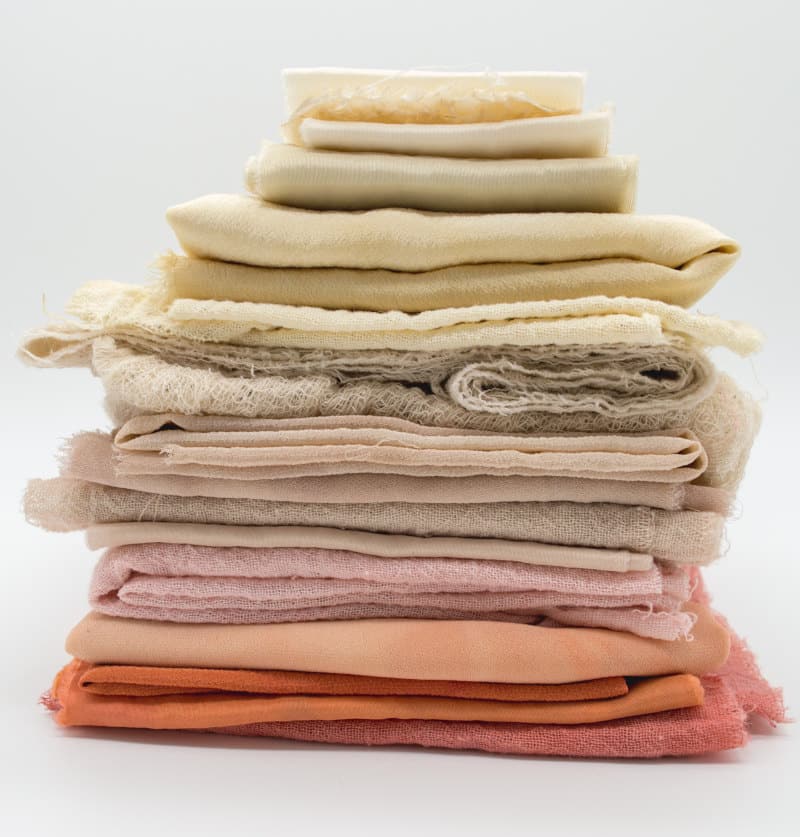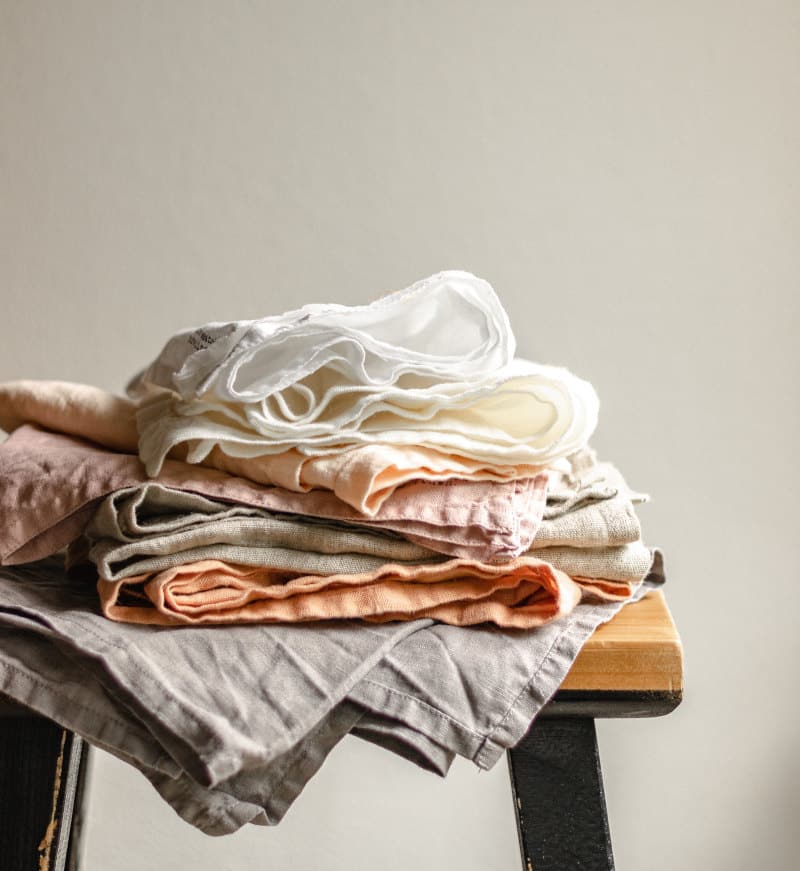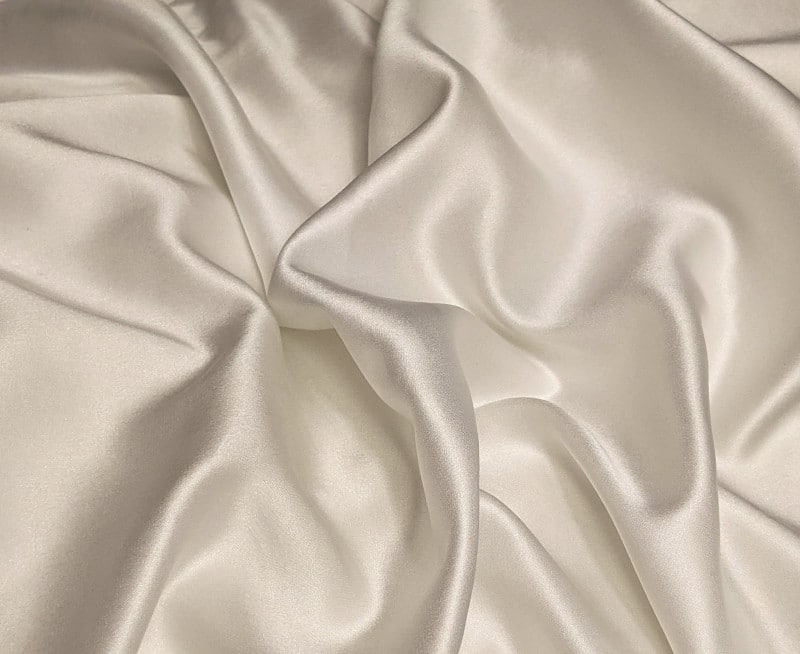15 Sustainable Fabrics For An Eco-Friendly Wardrobe
When it comes to sourcing fabrics, whether it be for your wardrobe, home decor, or other uses, it’s important to be mindful of sustainability. Individual responsibility can only go so far when it comes to slowing the climate crisis; it is important for us to vote with our dollars on the things we care about in the world.
Choosing sustainable fabrics from companies dedicated to at least carbon neutrality can help push the markets towards creating and innovating more sustainability, thus helping the world on a global scale by making one simple choice.
It is also important to remember that, despite the fact that there is no ethical consumption under capitalism, we can put a little extra effort and money into choosing slow, sustainable fashion, rather than fast, trendy fashion, which aside from using unsustainable fabrics, often is produced by laborers in terrible conditions.
Like when choosing the food we buy, the clothes we buy also come to us through the hands of people working hard. We can choose to buy from companies who make sure their workers are taken care of, rather than exploited; and this goes for animal-derived fabrics as well.
Let’s take a look at what makes fabrics sustainable, what fabrics are and aren’t sustainable, and a few ways to look for sustainable fabrics.
What Makes Fabrics Sustainable?
Sustainable fabrics must possess a few key qualities. Some fabrics can be sustainable in one way and unsustainable in another, as is the case with many animal-derived products.
Sustainable can mean that it is created using an easily renewable resource or be easily recycled. Many sustainable fabrics are made from reclaimed fabrics that wouldn’t have been seen as sustainable in their virgin forms, like recycled polyester, however, many otherwise sustainable fabrics made from reclaimed material can still leech toxic chemicals or microplastics into the environment.
Fabrics made from natural materials, like hemp and linen, are sustainable because they renew easily and don’t require pesticides or fertilizers, which can be harmful to the environment, or large amounts of resources. These fabrics are also made from plants that are used in their entirety, resulting in a low amount of waste generated.

Generally, sustainable fabrics do not require a large amount of resources in order to grow. Some fabrics, like cotton, are only sustainable when produced in certain methods – otherwise, cotton requires an enormous amount of resources like land and water, which make it less sustainable over time even than certain plastics by the time it is turned into fabric. However, organic and recycled cotton are seen as sustainable.
Many animal derived fabrics are sustainable only by virtue of the renewability of their resources, especially in the cases of wools where the animal is not killed. Domestic agriculture, however, is a huge contributor to climate change.
When animal-derived fabrics are taken care of properly, they are as sustainable as reclaimed fabrics. A vintage leather jacket passed down from generation to generation is more sustainable than a single coat made of pleather, and leaves less of a footprint once it is finally discarded.
List of Sustainable Fabrics
Below is a list of fabrics that can be considered sustainable in one way or another, especially when sourced from producers who are transparent about their sustainability practices.
Natural and Vegan
Hemp – Hemp is a class of Cannabis sativa cultivar that is grown specifically for industrial and/or medicinal use. It’s been in use as a fiber for at least 50,000 years. It’s a wonderful option for sustainable fabrics, as it is one of the fastest growing plants on earth, doesn’t require pesticides, naturally fertilizes the soil, and doesn’t exhaust the soil with its water intake. It is also naturally organic and fabrics created with 100% hemp don’t require an organic certification. Unfortunately, it can be more expensive and thus less accessible.
Organic Linen – Linen is another sustainable fabric that has been in use for millennia. Linen is made from flax, a plant that can be used in its entirety and thus waste-free. Flax doesn’t require fertilizer to grow and can be grown in places that other plants find more difficult to thrive, making use of soil that otherwise would be unused. As long as other chemicals aren’t used in its creation, linen is also a biodegradable fabric which contributes to its sustainability. It is also on the more expensive side, however, and must often be shipped overseas, which creates a larger carbon footprint.

Organic Bamboo Linen – When produced organically, bamboo is a wonderful option for sustainable fabrics, as it is, along with hemp, one of the fastest growing and most regenerative plants and doesn’t require fertilizer. While chemically processed bamboo is not thought to be sustainable, mechanically processed bamboo like linen and bast are. It creates a soft fabric that is antimicrobial and antifungal.
Recycled Cotton – Recycled cotton is produced using post-consumer and post-industrial waste. Recycling is obviously a cornerstone of sustainablity, and when cotton is recycled from clothes that are no longer wearable, it can be used to create new, more sustainable fabrics, thus extending its usefulness and reducing the carbon footprint, while keeping materials out of landfills. A Swedish company called Renewcell recycles cotton into a new fabric known as circulose.
Organic Cotton – While conventional cotton is actually not a sustainable fabric (which we’ll look into later in the article), organic cotton is produced in a sustainable manner. Without the use of toxic pesticides, GMO seeds, or synthetic fertilizers, organic cotton still uses a good bit of water in its production. Organic cotton, like many items that require an organic certification, can also be rather expensive, and the organic certification process can sometimes lack transparency when it comes to actual sustainable practices. With any cotton, don’t take the organic certification for granted – if you’re committed to sustainable fabrics, make sure to check for a GOTS or OCS certification when browsing organic cotton brands.
Animal Derived
Wool – Wool can be derived from sheep or alpacas. It has been in use by humans for ages, as it is very insulating from both cold and wet, and can last for a very long time depending on how well it is cared for. At the end of its life, wool garments can be composted, as long as they are created from 100% wool, or a compostable blend (this article explains the difference between biodegradable vs compostable). It’s important to check into the sourcing and production methods of wool brands, as we all know that animal abuse is rampant in the food and fashion industry. As long as the wool is produced humanely, it is a wonderful choice for long-lasting, sustainable fabrics.
Cashmere – Another form of wool, made from cashmere and pashmina goats, it teeters on the sustainability scale. Any fabric derived from renewable resources, like domestic animals, can be technically sustainable, especially when it can last as a piece over generations when kept in good condition. However, much commercial cashmere, aside from the carbon footprint it leaves from being shipped overseas, is responsible for desertification of fields used for grazing, thus decimating air and soil quality due to poor land management. When choosing cashmere, as with sheep or alpaca wool, be sure to vet for production methods, or choose vintage if you can find it.
Camel – Camel hair is wool created from the topcoat and undercoat of a camel. It’s a durable, long lasting material when cared for properly, much like other animal wool products. As with the other animal-derived fabrics, it is semi-sustainable, as it can be worn for many generations with proper care. It does not require the killing of the animal, so one camel can give wool continuously over its life. However, domestic agriculture is one of the top contributors to carbon emissions as well as being dangerous for laborers. Find vintage camel hair pieces when you’re going for more sustainable animal-derived fabrics.

Silk – Silk is created from silkworms, whose primary food source are mulberry leaves. Mulberry trees are easy to grow and relatively pollution-resistant, making them a low-waste, easily renewable resource and thus silk a good choice for sustainable fabrics. As with any animal-derived material, ethics can come into play in its production, so vet carefully for ethically sourced silk. Silk can also be passed down, as with other fabrics, as long as it is taken care of correctly.
Leather – Leather is a bit of a controversial material in terms of sustainability, but the fact is that when cared for properly, it can last for generations. It also doesn’t introduce any microplastics into the environment even when it is finally disgarded. Plastic-derived leather is more harmful for the environment than vintage cow’s leather. If you’re looking for a great leather piece, try to find well cared for vintage leather, that will last for several more years and has outlasted its carbon footprint. New leather should be avoided when looking for sustainable fabrics, although there are companies who are committed to sustainability even in leather production.
Synthetic Vegan
ECONYL – ECONYL is an alternative to nylon that’s created using industrial fabric waste, ocean plastic waste, and abandoned fishing nets. It’s created using a closed loop system, which cuts down on water usage and waste production. No virgin plastic is produced when creating ECONYL and it is not animal-derived in any way. It can still release microplastics as it is derived from plastic, which is important to remember when seeking out reclaimed fabrics made from reused plastic.
Recycled Polyester – Virgin polyester is known as one of the least sustainable fabrics as far as production and longevity, but any deadstock that is usable that is made from polyester is sustainable as long as it has been recycled, whether into a new fabric or passed down as a vintage item.
Semi-synthetic
Lyocell – Lyocell is a type of cellulose fiber created using the same process as rayon viscose, but in a much more sustainable manner. Lyocell is generally made using a closed-loop process, while viscose is not. A closed-loop process reuses any harmful chemicals or solvents rather than disposing of them, which results in less harmful waste spreading into the environment. So while the chemicals used in the process are harmful, much less is being released as a result of the closed-loop process. However, these chemicals remain in the fabric, which is important to remember for those with sensitive skin or chemical aversions.
Bamboo Lyocell – Bamboo lyocell is the name for lyocell made using only bamboo pulp. Typically Lyocell refers to any cellulose fiber.
Modal – Modal is created in a similar process to Lyocell, using beech trees.
What Are the Least Sustainable Fabrics?
Of course, when looking for sustainable fabrics it’s important to know which fabrics are the least sustainable. Generally, these fabrics are unsustainable because the process required to make them leaves a large carbon footprint, uses a vast amount of resources, or leeches harmful chemicals and microplastics into the environment. The following fabrics are ones to avoid if you’re looking to stay away from unsustainable fabrics.
- Virgin Polyester
- Acrylic
- Conventional Cotton
- Rayon/Viscose
- Nylon
Where can I get sustainable materials from?
There are many options for finding sustainable materials, whether looking for companies that produce sustainable fabrics, like Renewcell, companies that only supply sustainable fabrics, like G Mega, or shopping for vintage or used clothing.
When searching for sustainable materials, keep a lookout for certifications which include USDA Certified Organic, Global Organic Textile Standard (GOTS), Recycled Content Standards (RCS), Forest Stewardship Council (FSC), and Organic Content Standard (OCS), among others.
Final Thoughts
Sustainable fabrics, whether they be plant, animal, or synthetically derived, are an important part of keeping our carbon footprint low during this time of climate change and crisis.
Choosing to source fabrics that are sustainable through renewability, low resources used and low waste created, and reusability is a step in the right direction towards making a difference with your personal choices.
We should also remember that it’s impossible to be perfect while consuming under capitalism, and as long as we continue to make small choices for the betterment of our planet, we can make a difference.
It’s also vital to demand accountability and change from the large corporations who are the main contributors – and choosing sustainable products, like fabrics, with your dollars is one way to do that.